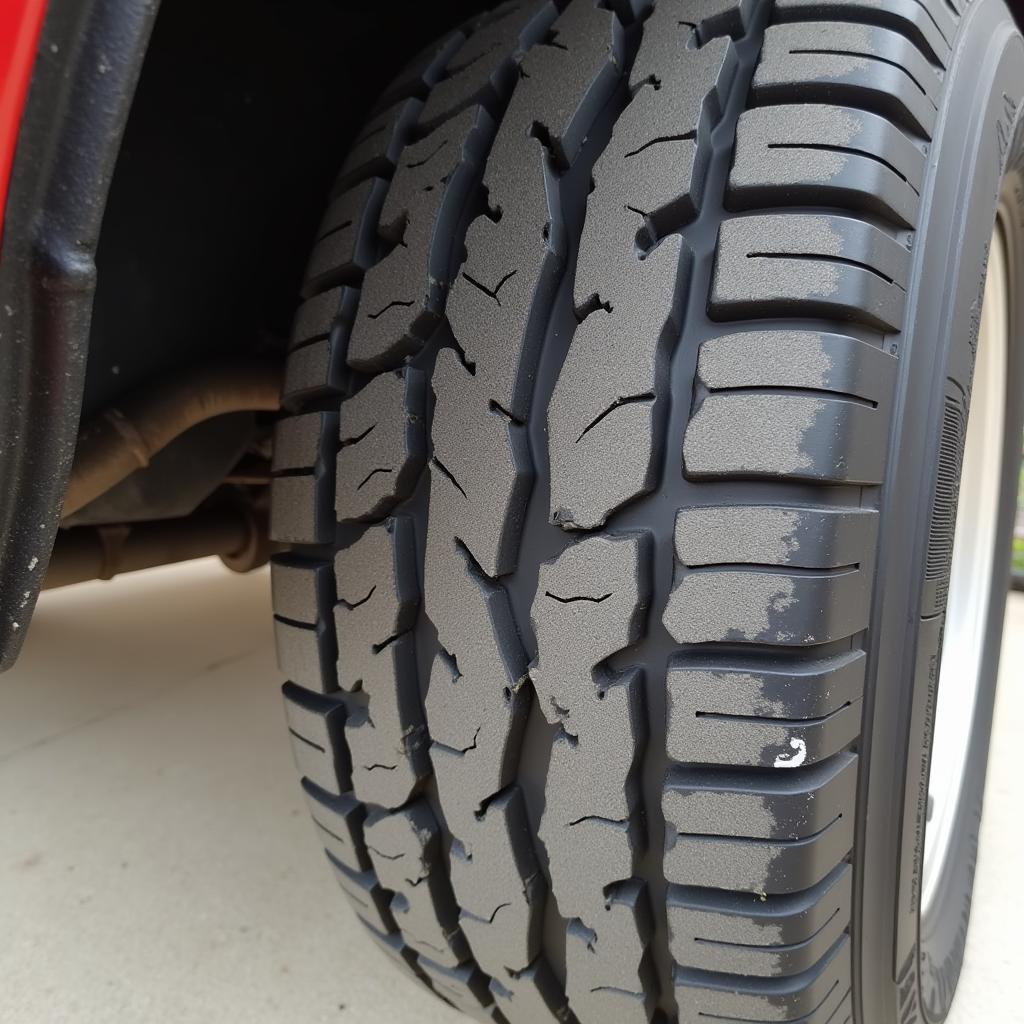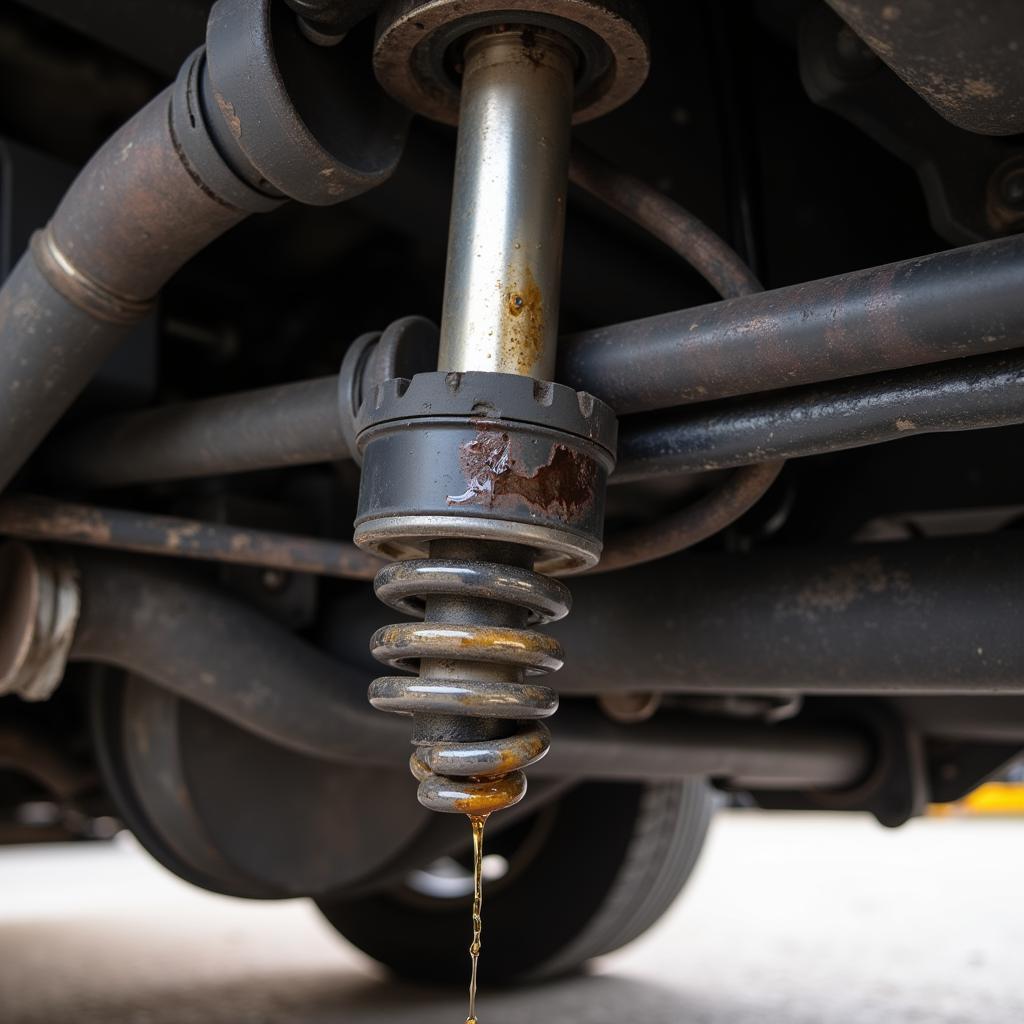Troubleshooting Car Problems Shocks can be tricky, but with the right knowledge, you can pinpoint the issue and get your ride back to smooth sailing. This guide provides a comprehensive approach to diagnosing and resolving shock absorber problems, empowering you to take control of your car’s suspension health. car rear suspension problems offers more insights into suspension issues.
Understanding Your Car’s Shock Absorbers
Shock absorbers are crucial for maintaining control and a comfortable ride. They dampen vibrations, keeping your tires in contact with the road and preventing excessive bouncing. A malfunctioning shock absorber can compromise handling, braking, and overall safety.
Why Troubleshooting Car Problems Shocks is Important
Ignoring faulty shocks can lead to uneven tire wear, increased stopping distances, and a generally uncomfortable driving experience. It can also put extra strain on other suspension components, leading to more costly repairs down the line.
 Worn Tire Due to Bad Shocks
Worn Tire Due to Bad Shocks
Common Signs of Bad Shocks
Several tell-tale signs indicate your shocks might need attention. These include:
- Excessive bouncing: Does your car feel like a pogo stick after hitting a bump? This is a classic sign of worn shocks.
- Nosediving when braking: If your car’s front end dips dramatically during braking, your front shocks might be failing.
- Squeaking or knocking noises: Unusual noises from your suspension, especially over bumps, can point towards worn shock absorber bushings or other related problems.
- Uneven tire wear: Look for cupping or scalloping on your tires, as this can indicate that the shocks aren’t effectively dampening vibrations.
- Fluid leaks: Check your shocks for signs of oil leakage. Leaking shocks are a sure sign of a problem.
 Leaking Shock Absorber
Leaking Shock Absorber
How to Test Your Car Shocks
A simple “bounce test” can help you assess the condition of your shocks. Push down firmly on each corner of your car and release. If the car bounces more than once or twice, the shocks are likely worn.
Troubleshooting Specific Shock Problems
Diagnosing specific shock issues requires a closer look. Here are some common scenarios:
- One shock is bad: This can cause the car to pull to one side, especially during braking.
- Both front or rear shocks are bad: This can lead to excessive bouncing and instability.
- Leaking shocks: This requires immediate replacement as the shock will no longer function correctly.
If you’re experiencing rc nitro car clutch problems, that’s a different area of expertise altogether!
“A thorough inspection is crucial,” says automotive expert, John Miller, ASE Certified Master Technician. “Don’t just assume it’s the shocks. Other suspension components can mimic similar symptoms.”
DIY vs. Professional Repair
While replacing shocks can be a DIY project for experienced mechanics, it often requires specialized tools and knowledge. If you’re unsure, it’s best to consult a qualified mechanic.
“Don’t delay shock replacement,” advises Sarah Chen, Lead Technician at Chen Automotive. “Driving with bad shocks can compromise your safety and lead to more expensive repairs in the long run.”
For more insights on costly car problems, you might find problemas serios y caros de un auto helpful. If you own an Infiniti FX45, check out infiniti fx45 car problems for specific issues related to that model.
Conclusion
Troubleshooting car problems shocks is crucial for maintaining a safe and comfortable ride. By recognizing the signs of bad shocks and understanding the troubleshooting process, you can keep your car handling its best. Don’t hesitate to contact AutoTipPro at +1 (641) 206-8880 or visit our office at 500 N St Mary’s St, San Antonio, TX 78205, United States for expert advice and assistance with troubleshooting car problems shocks. We’re here to help you keep your car in top shape. Considering the physics of turning, car on banked curve problem provides a deeper understanding of vehicle dynamics.





Leave a Reply